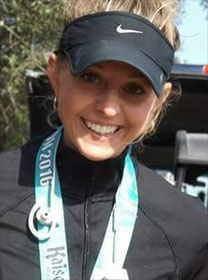It is Spring! This time of year brings warmer temperatures, longer days, outdoor activities and
spring sports! Many youth athletes are changing out their basketballs, wrestling uniforms and
hockey sticks for running shoes, baseball gloves and bicycles.
Youth sports is a fantastic opportunity for kids. Athletes learn about teamwork and physical
fitness. However, with sport comes risk. According to the Centers for Disease Control and
Prevention, more than 2.6 million children aged 0-19 are treated in the emergency department
for sport and recreation-related injuries and illnesses. In most cases, sports-related 1 injuries are
preventable, yet according to the National Athletic Trainers’ Association (NATA) and Safe Kids
USA , more than half (62 percent) of sports injuries occur during practice. Information provided
by the University of Michigan Health System, suggests that sports injuries may be caused by a
variety of other issues such as:
- Individual medical issues such as sickle cell anemia, asthma
- Ineffective protective equipment
- Poorly maintained facilities
- Malnutrition/dehydration
- Environmental stressors
April is Youth Sports Safety Month. This is a time designated to educating parents, coaches
and athletes on measures designed to ensure young athletes are enjoying their time in sports
safely. There are measures that can be taken to help decrease risk of injury and illness in youth sports.
First, get a Preparticipation Exam (PPE). PPEs are exams that screen for injuries, illness and
other factors that can increase risk in sports. Experts in the field of athletic training, sports
medicine, orthopaedics, family medicine, pediatrics, and osteopathics all agree that the
identification of predisposing factors that threaten one’s safety are vital to participation in sport
and will serve to improve the health and safety of athletes and active individuals.
PPEs have several components including review of family medical histories, a physical
examination, nutrition consultation, heat illness risk assessment, and medication reviews.
Currently, there is no mandate in youth sports on how often PPEs should be performed, but a
good rule of thumb is to have one each year before a season begins. A licensed physician or
advanced practice registered nurse with a sports medicine specialization are the best medical
professionals to perform PPEs.
Secondly, acclimatize to the weather. The summer season brings high temperatures and high
humidity. Athletes need to allow their bodies the ability to adjust to these conditions over a
period of time. The goal is to increase exercise heat tolerance and enhance the ability to safely
exercise in warm temperatures. Guidelines set by the National Athletic Trainers Association
Position Statement on Exertional Heat Illness outline a 14 day acclimatization process for
athletes that has been adopted by several high school athletic associations across the country.
One of the most high profile areas of sports medicine research today is in the area of
concussions. A concussion is an injury to the brain when there is a “blow to the head”, a “bell
rung” or a “jolt” that alters the way the brain behaves and causes the person who experiences
the injury to think, act and feel differently. Contrary to popular belief, a concussion injury does
not require an athlete to be “knocked out”. An athlete that complains of “blacking out” or “seeing
stars” has likely experienced a concussion. A concussion changes the way the 3 brain works. It
is an injury that requires healing. It is imperative to allow the brain to fully recover before
returning to school and sport. Concussions should never be “pushed through” as this
compromises the healing process. Athletes should be encouraged to speak up when he/she
has experienced a head injury and feel comfortable to take the necessary “time off” to allow the
brain to heal. Athletes have one developing brain that continues to grow into their twenties and
need to take care of it!
Frequent education regarding concussions for coaches, parents, administrators, and athletes is
a vital step in keeping athletes safe. Education topics should include signs and symptoms of
concussions and how to care for a concussion once one is sustained. Having concussion
protocols for on-field care, assessment and management, return to play guidelines in place
before a season begins ensures an athlete does not do any further harm to his/her brain. These
protocols can vary from state to state and athletic association to athletic association.
Discussing these topics frequently with all personnel involved is a sound strategy for ensuring
safety of the athletes. Good resources for concussion information can be found on the CDC's
Heads Up Page.
Protective equipment is a key component in athlete safety. However, ill-fitting or poorly
maintained equipment can put an athlete in harm’s way. Trained coaches, parents,
administrators or athletic trainers should be evaluating each athlete regularly to ensure his/her
equipment is properly fitting. Helmets, shoulder pads, mouth guards, eye wear, and catchers
gear are examples of gear that needs to be regularly inspected. Young athletes are constantly
growing and checks may need to be performed multiple times a season.
Facilities where sports are being played must also undergo safety inspections. Regularly
checking a field or a court for any danger zones is just as important as ensuring a helmet is
properly fitted to a specific athlete. Additionally, emergency equipment such as AEDs and
entryways for emergency vehicles should be regularly inspected and maintained. The more
regular these items are checked, the more reliable they will be when they are needed.
Having an Emergency Action Plan(EAP) for each venue is ideal. Emergency Action Plans are
written documents containing detailed plans, instructions and assignments for when an
emergency does occur. EAPs should contain contact information for medical personnel,
administrators and if needed, facility managers. EAPs also contain directions for transportation
of injured athletes or spectators. EAPs should be reviewed regularly and any updates should
be made. Having an EAP clearly posted at each venue helps to ensure medical care is
rendered in the most efficient manner for an injured athlete.
Educating administrators, coaches, parents and athletes on the signs and symptoms of sudden
death is another important aspect of keeping young athletes safe. Sudden death can result from
a variety of factors. The National Athletic Trainers Association Position Statement on
Preventing Sudden Death in Sports outlines these factors and gives recommendations on how
they should be identified, prevented and managed. Sudden cardiac death (SCD) is the number
one cause of exercise related death in young athletes. Age is a very significant factor in regards
to SCD in athletes. For adults (individuals older than 35) coronary artery disease is the major
cause of exercise related sudden cardiac death. For youth congenital cardiac conditions are the
majority of causes for exercise related SCD. In the United States SCD is seen in all sports but
mostly in basketball and football due to higher participation levels. Males are more likely to
suffer from this condition as well as athletes of the African-American ethnicity.
One widely-accepted measure to decrease SCD is by becoming CPR certified. While
requirements vary significantly across the country, more athletic associations and teams are
requiring coaches and administrators to become CPR certified. In cases of cardiac arrest, the
sooner CPR can begin, the more likely SCD can be prevented 5Encouraging all personnel
interacting with athletes to complete a CPR course is a key component in athlete safety.
These tips offer some a starting point for discussions between coaches, parents, administrators,
athletes and medical personnel. Safe sport environments are the result of clear and consistent
communication between all groups involved in the care of athletes.
Sources:
1 Center for Disease Control and Prevention , National Center for Injury Prevention and Control , March
2017.
2 Korey Stringer Institute
3 Sports Concussion Institute
4 http://www.ncbi.nlm.nih.gov/pubmed?term=Maron%2C%20 Thompson%2C%201996
5 Casa, DJ, et al. National Athletic Trainers Association Position Statement: Preventing Sudden Death in
Sports. Journal of Athletic Training . 2012:47 (1) 96-118.
6 National Council of Youth Sports
Written by Angie Wills, ATC.



